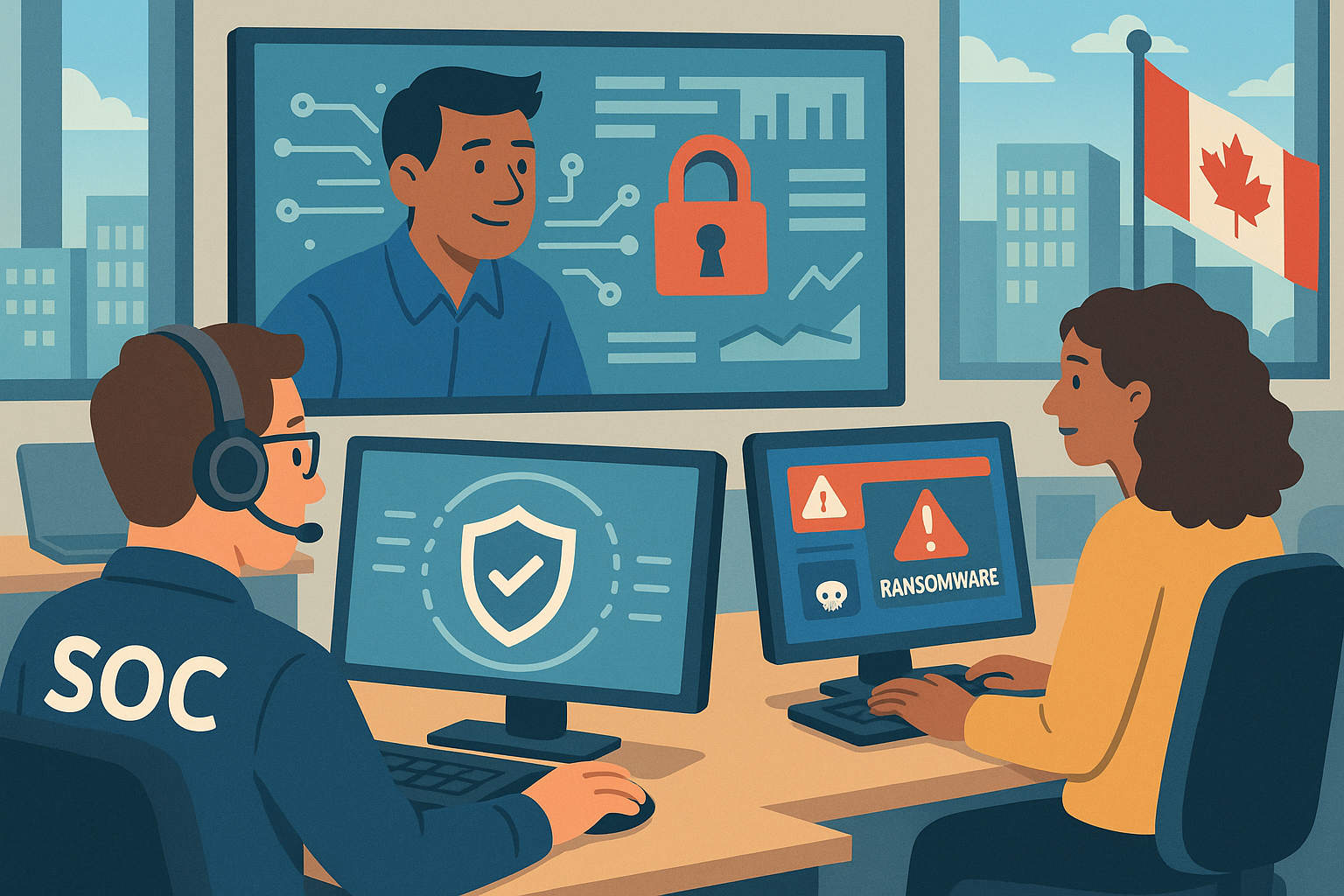Shared Services Centre Turns to Managed SOC to Boost Operational Resilience Amid Ransomware Threats
The Challenge
In early spring, the provincial Shared Services Centre (SSC), a centralized IT hub for more than thirty municipal departments, was hit by a sophisticated ransomware campaign. The attack began with a burst of suspicious authentication attempts, followed by rapid file encryption across shared systems. Within hours, platforms supporting payroll, permit processing, and citizen inquiries were unavailable.
The intrusion traced back to a compromised remote desktop session that exploited weak, legacy authentication controls in the SSC environment. Traditional antivirus tools were present, but monitoring was fragmented. Each department watched its own logs, which created blind spots and delayed detection by nearly twelve hours. During that window, the attackers exfiltrated personnel and citizen data.
The operational impact was immediate. Municipal offices reverted to manual workarounds. Payroll for roughly 18,000 public employees was delayed. Public-facing websites were taken offline. Several emergency support functions experienced interruptions. Residents could not access licensing, benefit applications, or records.
Financial exposure mounted quickly. The SSC faced recovery and forensic costs, along with potential regulatory scrutiny under PIPEDA for unauthorized disclosure of personal information. An internal review showed the existing Security Operations Centre (SOC) was largely reactive. It was designed for periodic log review rather than continuous detection and response.
The incident became a watershed moment for the executive board. Cybersecurity had long been treated as a discretionary cost rather than a pillar of service continuity. Media attention grew, and oversight bodies questioned the adequacy of risk management and incident preparedness. By the time systems were contained, confidence in the SSC’s digital governance had eroded, and leaders faced intense pressure to prevent a recurrence.
Our Solution
Service Provided: Managed Services and Operations, delivering a 24×7 Managed SOC with integrated SIEM, EDR, and SOAR, identity hardening, resilient backup practices, and privacy-led incident governance.
– Stand up a unified Managed SOC with continuous monitoring across endpoints, servers, cloud services, and networks. Normalize and centralize logs in a single SIEM.
– Deploy EDR on all workstations and servers. Enable automated containment and threat-hunting playbooks for ransomware, lateral movement, and data exfiltration.
– Implement phishing-resistant MFA, privileged access management with just-in-time elevation, and conditional access. Remove legacy protocols and exposed RDP.
– Re-architect network segmentation for shared platforms. Enforce least-privilege access, egress controls, and data loss prevention.
– Validate immutable and offline backups using a 3-2-1-1-0 model. Conduct non-production restore exercises.
– Align breach handling with PIPEDA and provincial public-sector privacy laws. Preserve evidence under legal hold and document decisions.
– Establish SOC SLAs and OLAs. Create an executive reporting cadence and run crisis tabletop exercises.
The Value
- Risk reduction: Mean Time to Detect decreased from about 12 hours to less than 5 minutes. Mean Time to Contain reduced to under 30 minutes for priority incidents.
– Operational resilience: Time to restore Tier-1 services decreased by 40 to 60 percent through automated playbooks and tested restore runbooks.
– Regulatory readiness: Standardized breach assessment and notification workflows enable decisions within 72 hours of discovery, where required.
– Cost avoidance: Rapid containment and tighter segmentation reduce interruption losses by an estimated seven-figure sum and streamline cyber insurance interactions.
– Executive assurance: Quarterly resilience scorecards track control coverage, patch compliance, and incident dwell time, enabling informed oversight.


